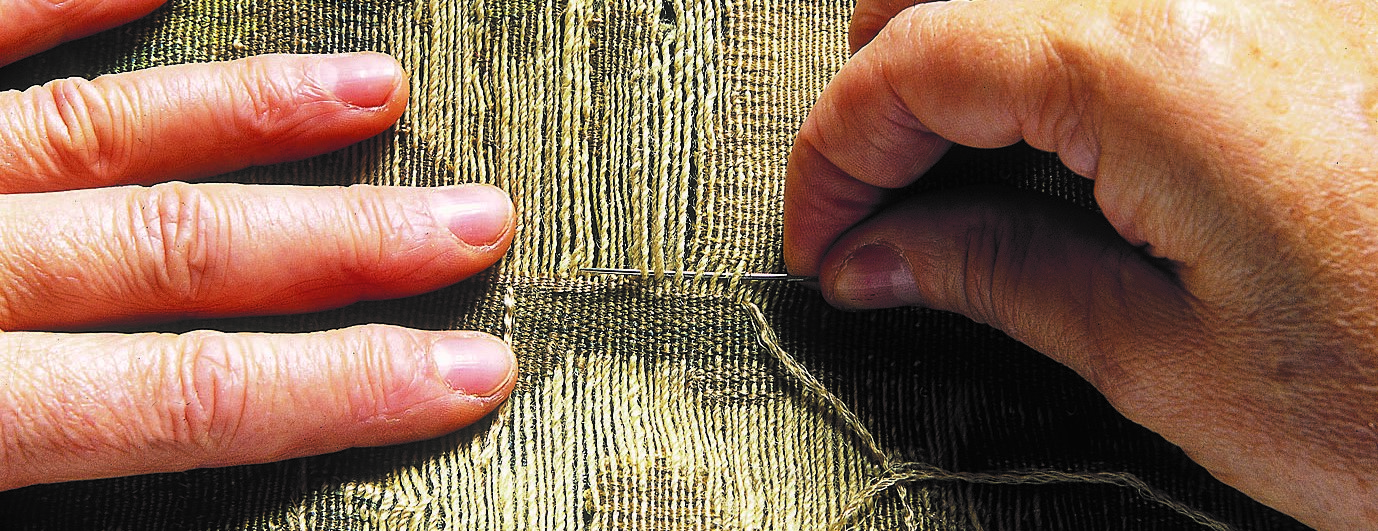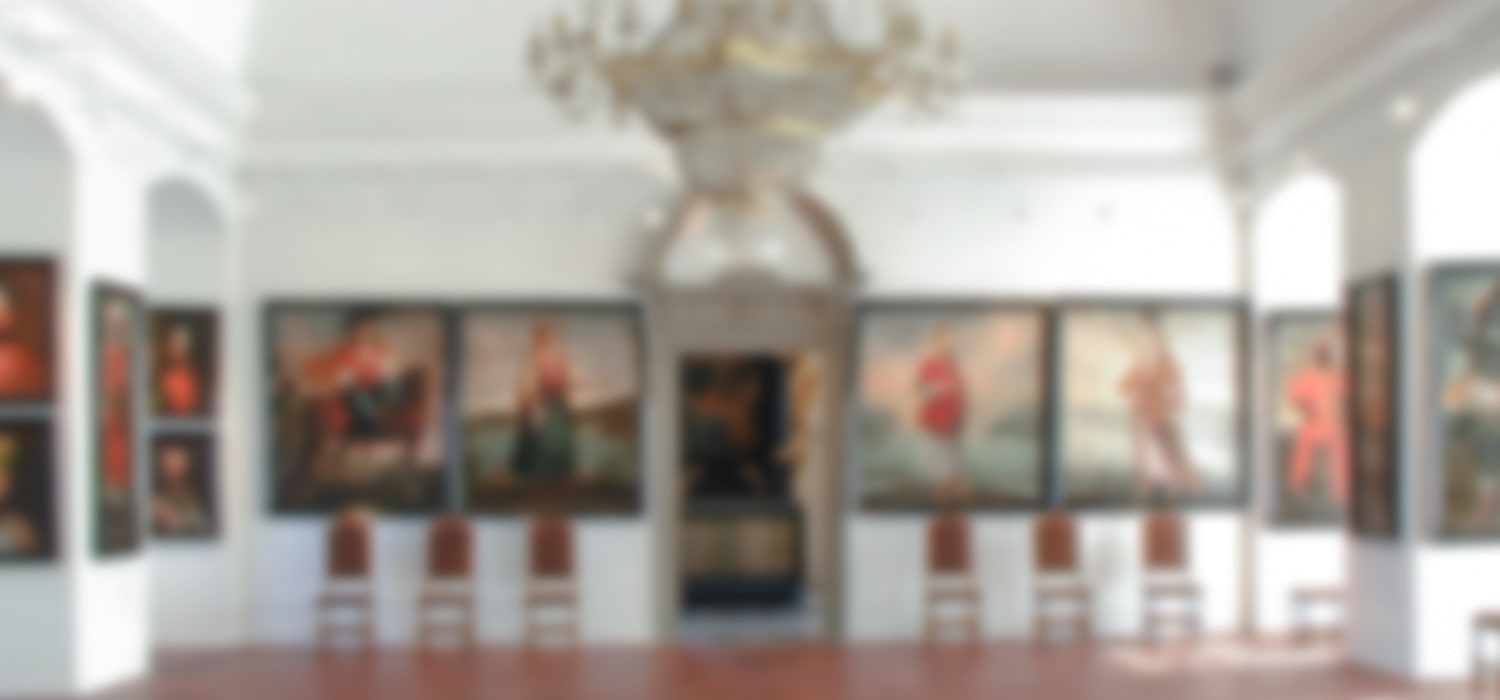FOUR DECADES OF THE TEXTILE CONSERVATION AND RESTORATION WORKSHOP
The largest collection of historical tapestries in Slovenia, which is kept in the Ptuj Ormož Regional Museum, is closely linked to the establishment of the first museum textile conservation and restoration workshop, which was also the only one in Slovenia for many years. In 1982, the Ptuj Museum began to salvage priceless early 17th-century Brussels tapestries with motifs from the life of Odysseus. By late 1979, the then curator, Dr. Marjeta Ciglenečki, had already made initial contacts with Prof. Mira Ovčačik Kovačević from Zagreb, a renowned expert in the field of restoration of historical textiles, who, at the beginning of the following decade, introduced four female workers to the conservation and restoration work on the first of the four Odysseus tapestries in the premises of the Majšperk Woollen Products Factory.
In 1990, the restoration studio moved from Majšperk to the second floor of Ptuj Castle, and the museum employed one of the weavers from the original restoration team. A few years later, with the support of the Ministry of Culture, the museum was able to employ another conservator-restorer. Due to the inadequate conditions for carrying out all stages of conservation and restoration in the castle premises, it was necessary to consider moving to a more suitable workshop. The textile conservation and restoration studio was given new and properly equipped workshop premises when the old Ptuj prisons were completely renovated in 2002.
Over the years, not only the working conditions have improved, but also the knowledge that the museum conservator-restorers have acquired in the field of conservation of historical textiles at various international training courses. On the basis of this in-depth knowledge, in addition to saving the Museum’s Baroque tapestries, they also began to carry out conservation and restoration interventions on damaged textiles, such as banners, lace, liturgical and other historical garments, as well as on archaeological textile finds. The Ptuj textile workshop also receives items for restoration from other Slovenian museums, galleries, and various organisations. In the last decade, the museum’s conservator-restorers have carried out a number of challenging procedures, for example on Coptic textiles dating from the 3rd to the 6th century from the National Museum of Slovenia, a 17th-century chasuble or Coat of Hasan from the Kočevje Regional Museum, an early 18th-century liturgical pluviale from the Museum of Christianity in Slovenia, Victorian fabrics painted with biblical scenes for an exhibition at the National Gallery, a silk tailcoat from the end of the 18th century from the Koper Regional Museum, a flag of the Novo mesto civic guard from 1875, and a parasol from the first half of the 20th century, both from the Museum of Dolenjska in Novo mesto. They have fully or at least partially restored the delicate historic textiles to their former splendour and beauty, and extended their life. Alongside all this, they have not neglected objects from the local environment. They carried out preliminary conservation work on fragile and badly damaged medieval textiles from the presbytery of the tomb in the Dominican Monastery in Ptuj, owned by the IPCHS – Centre for Preventive Archaeology, and ensured that they are stored in suitable conditions. They also carefully restored eight tapestries by Marij Pregelj, which were formerly owned by Koto and are now part of the Ptuj Museum’s collection, as well as four Brussels tapestries, a tapestry with figural scenes woven in Aubusson at the end of the 17th century, and some of the other items exhibited in the permanent collections of Ptuj Castle, such as monastery items from the 17th, 18th, and 19th centuries and the banner of the Ptuj civic guard from 1769.
The history of the first textile conservation and restoration workshop in Slovenia, which is celebrating its 40th anniversary as part of the Ptuj Ormož Regional Museum, testifies to the fact that every beginning is difficult, but with enough enthusiasm and effort, good foundations can be laid and boundaries can be pushed in the advancement of professional knowledge and conservation and restoration skills. Moreover, the reputation and success of the Ptuj textile workshop in the national context proves that we can follow internationally established trends and professional practices in the treatment and handling of historic textiles. There will certainly be no shortage of work and successful solutions to new challenges in the future.
THE COUNTER DISPLAYS BASIC TOOLS FOR CONSERVATION AND RESTORATION OF HISTORIC TEXTILES AND SILK THREADS FOR STABILISING DAMAGE.

